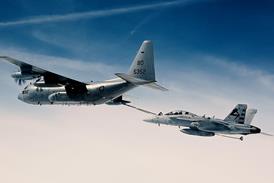Paul Lewis/SINGAPORE
Airbus Industrie is looking for a collaborative programme to substitute for the AE31X to placate its Chinese aerospace industry joint venture partners in the regional jet project. The Chinese are increasingly irritated that the proposed 100-seat A319M5 derivative is gaining momentum as a quick fix alternative to compete with the relaunched Boeing 717-200.
Senior officials at Aviation Industries of China (AVIC) are understood to be "very unhappy" with the revelation that Airbus was studying a five frame shortened variant of the A319 (Flight International, 4-10 March). The situation has been further exacerbated by the recent comments of French aerospace and government officials questioning the financial feasibility of the proposed 95-115 seat AE31X.
According to an industry insider, one solution being explored is for Airbus to proceed with the launch of the A319M5 to meet immediate market demands and match the 717 - but also try to remain engaged with China in a longer term substitute development effort less constrained by time. Efforts to launch the AE31X have been snared by difficulties, not least the issue of technology transfer.
Airbus is trying to avoid breaking its Chinese regional formation
Some Asian observers regard the A319M5 as little more than a negotiating ploy to extract more concessions from AVIC. The aircraft appears, however, to be rapidly gaining credibility with potential suppliers and operators. Engine suppliers BMW Rolls-Royce, CFM International, Pratt & Whitney and International Aero Engines are bidding to power the derivative.
European industry sources say that several pending large competitions - including Northwest Airlines' replacement of its McDonnell Douglas DC-9s - have made the need for a new 100-seat passenger aircraft "time sensitive". The first 717 is due for delivery in mid-1999, while the AE316/317 would not enter service until at least mid-2003. International Lease Finance confirms that it has opened talks with Airbus over the A319M5.
Observers note that the A319M5 represents "an unprecedented double shrink" which would present major operating cost challenges.
Source: Flight International























